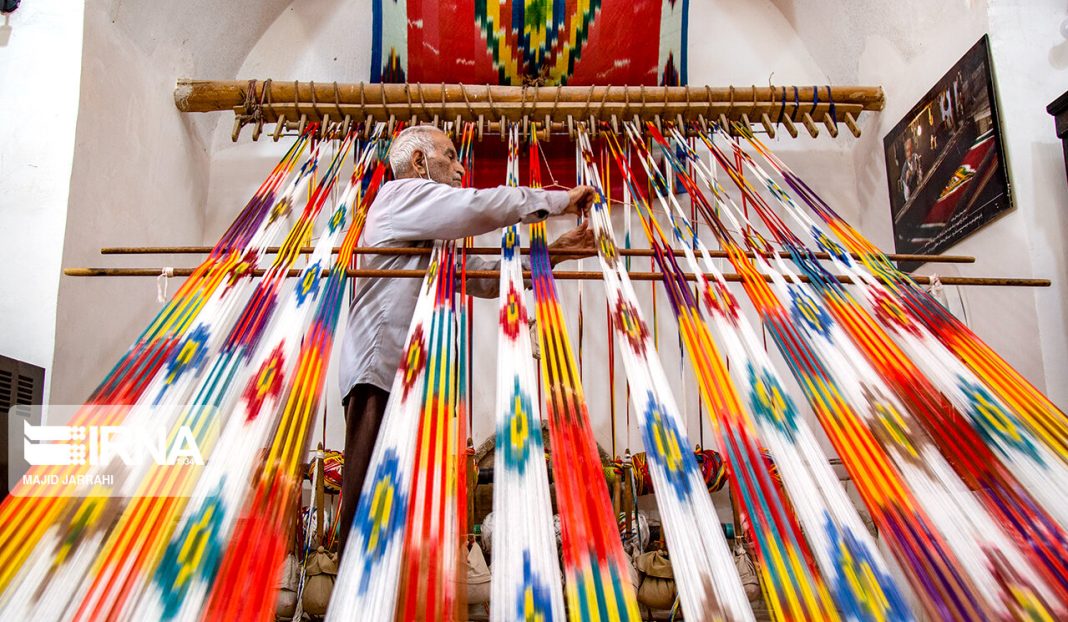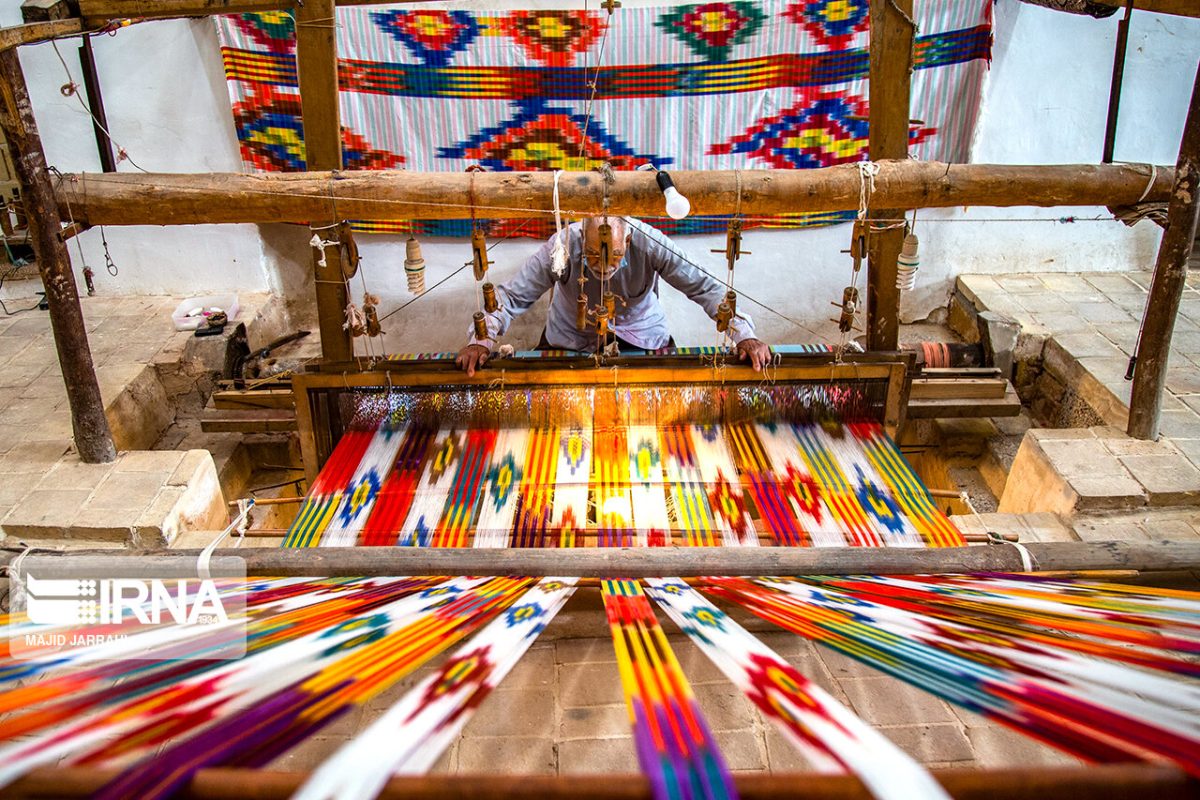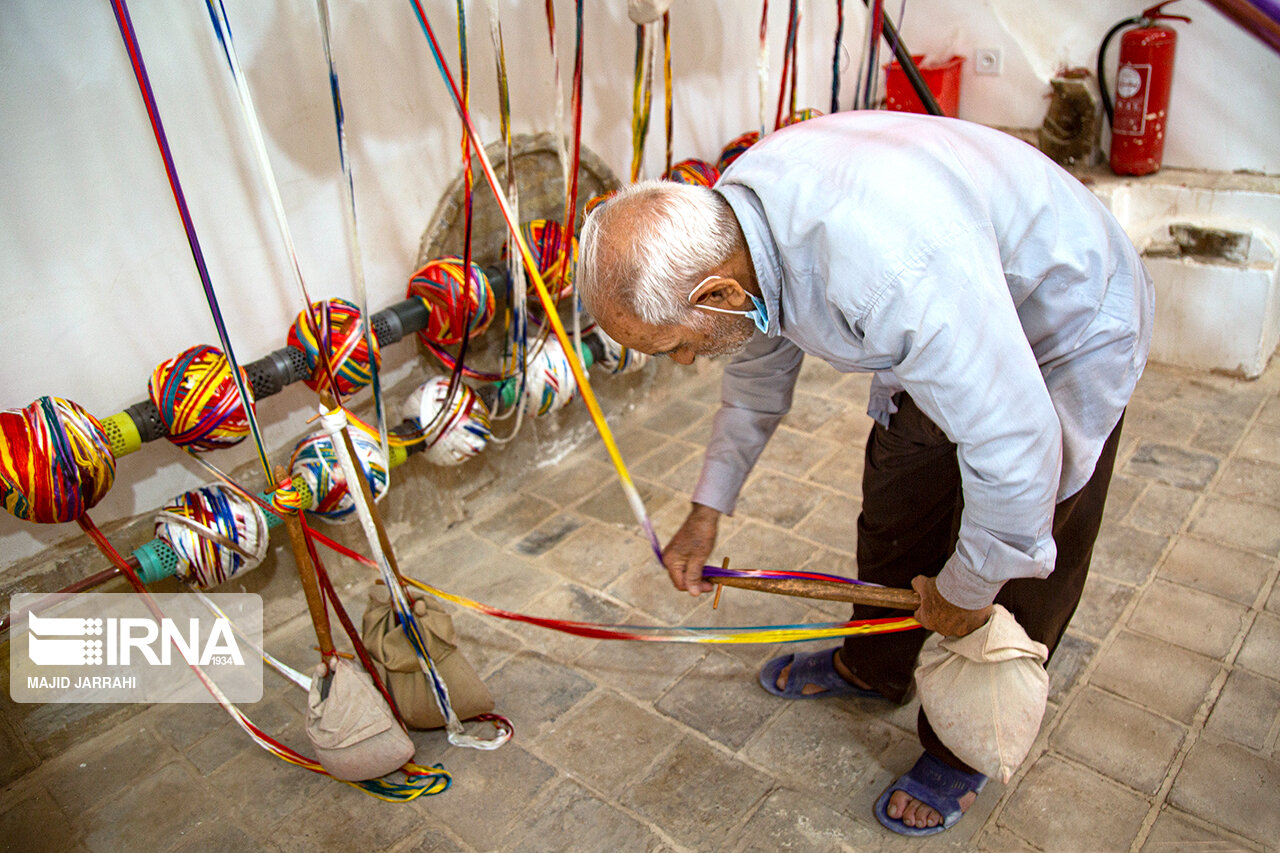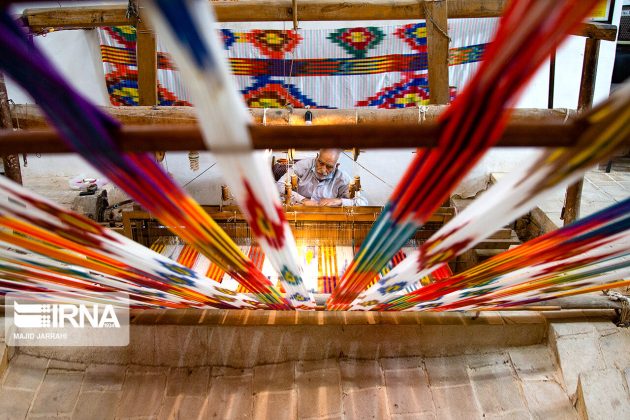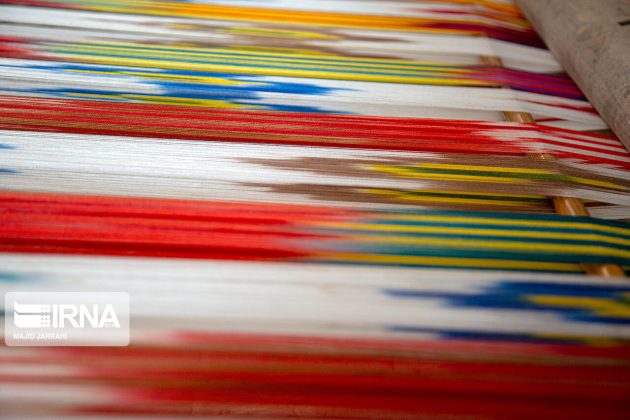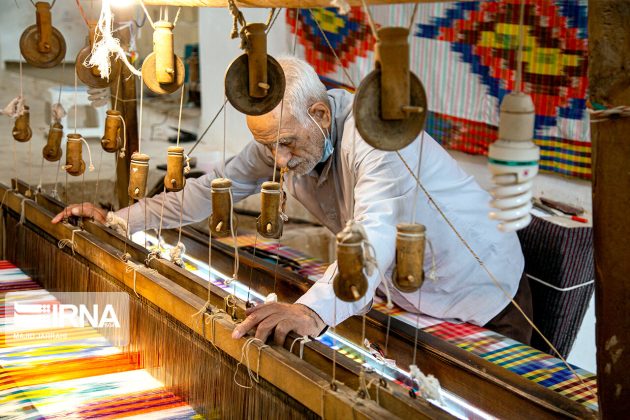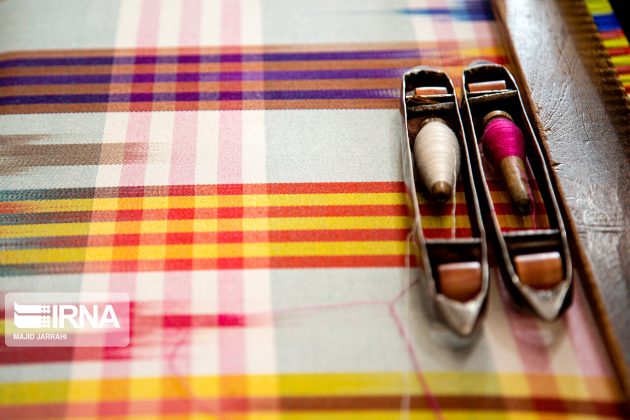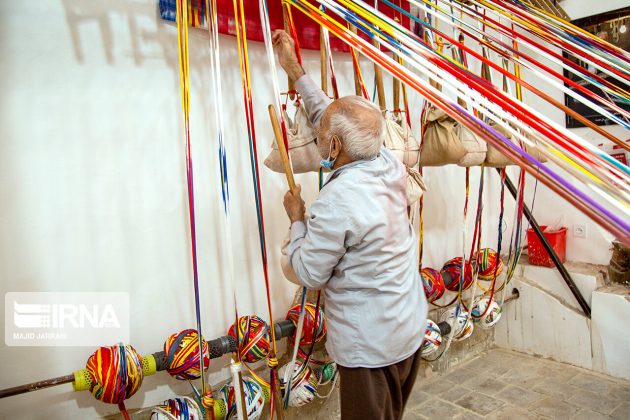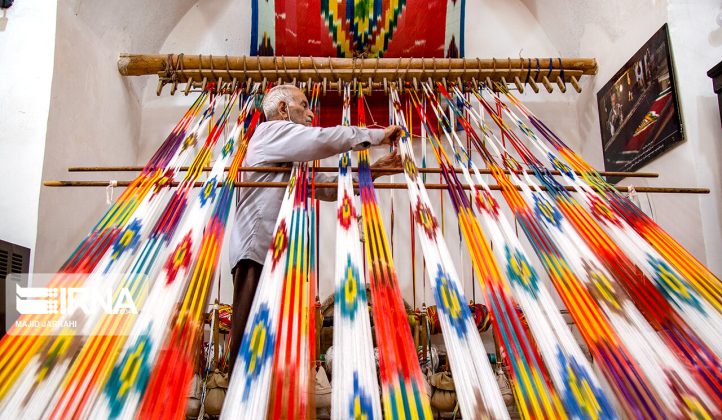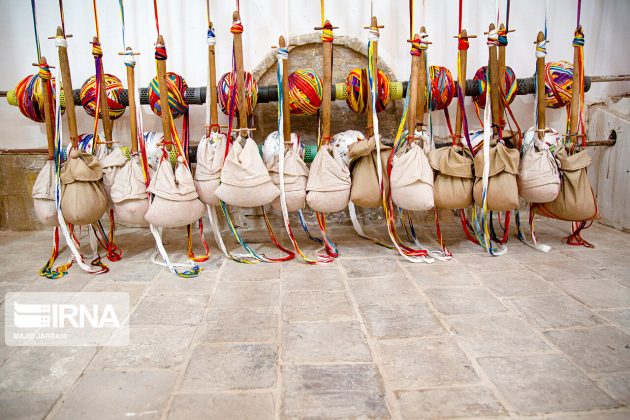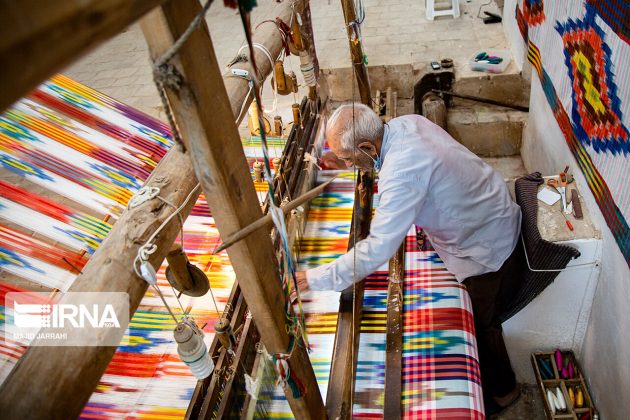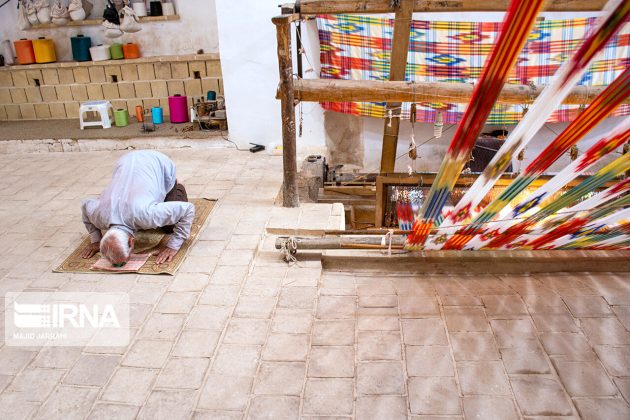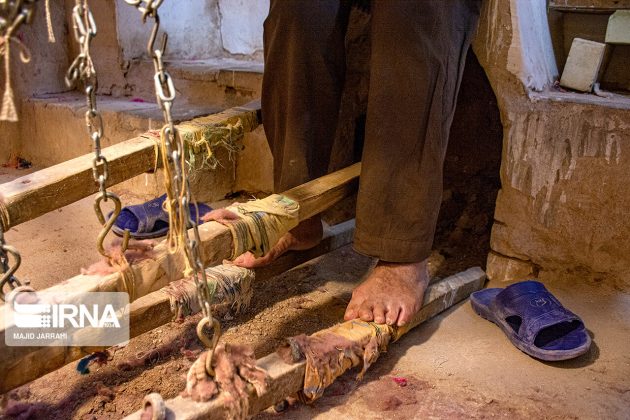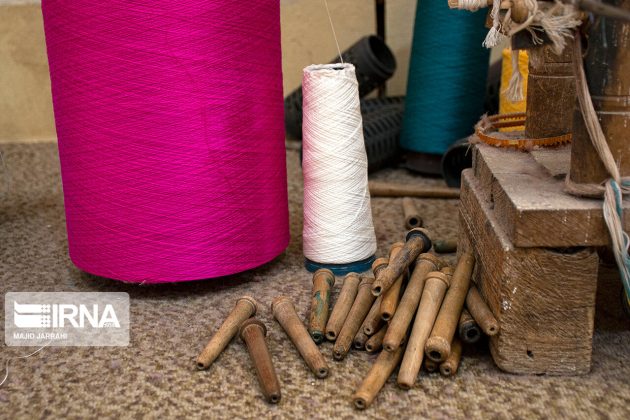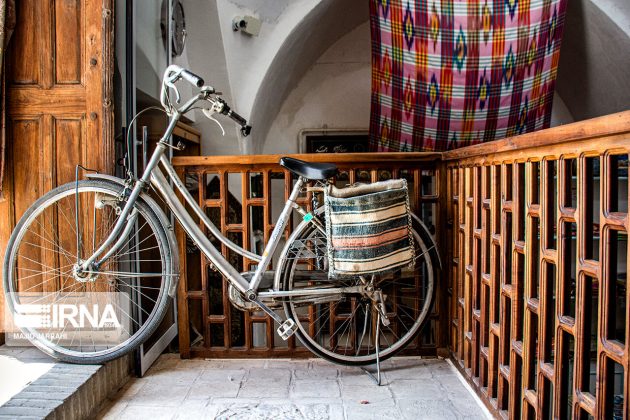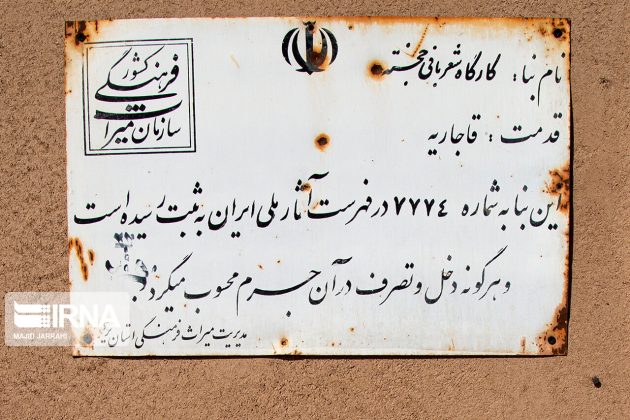Ikat weaving (Daraee bafi) dates back 800 years. It was a fabric that was produced using silk and natural colors. Some believe that it is called Daraee because in the past, Ikat was considered as an asset in the dowry of every bride.
Others believe the reason why it was called Daraee was that only the rich and the powerful could afford to buy the fabric.
The pictures used in Ikat are known as Chalipa in the traditional Persian art in which they have been used for thousands of years.
Examples of the famous patterns and pictures include mono-flower, quadro-flower and checkered design.
History of Ikat weaving
Ikat is a Malayan word meaning “to knot” and “to dye”.
It was an old technique for weaving patterned fabrics. In this technique, the fabric’s threads are dyed before weaving. This technique was in vogue in a number of countries in the world.
The Ajunta wall paintings that were drawn in northwest India some 50 years ago show women wearing garments with Ikat pictures.
The absence of any other proof makes it difficult to determine the exact date of the weaving of the garments and makes it impossible to track the development of techniques and influence of foreign patterns.
Ikat was woven in Latin American countries from Mexico to Peru. This is while this weaving method was tracked down in most of the lands falling within the Islamic realm from Madagascar to Spain and from India to West Africa.
This method has existed in Iran since a long time ago in various regions such as Yazd, Kashan, Azarbaijan, Khuzestan, Tabriz and Gilan.
However, the technique is concentrated more than any other area in the traditional workshops of Yazd.
Uses of Ikat
This beautiful fabric goes into tablecloths, bed covers, bedspreads, clothing decorations, scarves, bags, backpacks, and even coats.
In the past, natural silk was used to weave Ikat, but today viscose thread is used as warp and synthetic silk or viscose as woof. Meanwhile, creating pictures and patterns in this fabric using natural colors was very common in the past.
The rose madder and carmine were used for red color, tree bark or flower for yellow color, and various minerals and soils for black color.
Features of ikat
The unique features of the fabric include the way it’s woven and the patterns created thereon. While weaving it, Ikat makers move the patterns onto the fabric by dyeing the warp and woof of the fabric. They then weave Ikat.
This is meticulous and time-consuming work, but the end result is very beautiful and valuable.
Given that Daraee’s texture and its special weaving technique are unique, you cannot find any identical pictures and designs on the garment.
Types of ikat
There are three types of Ikat: Warp Ikat, woof Ikat and warp and woof Ikat. Each is woven in its own way.
To weave warp Ikat, impenetrable thread is used for the purpose of closing the fabric. Then, the fabric is infused in a dye bath.
To weave woof Ikat, threads are wound on a rectangular frame. Those responsible for creating a pattern on the fabric are closed with impenetrable threads.
In the warp and woof type, the dyeing is done through tying method. This is tedious work. The warp and woof Ikat is the most popular expensive type due to the delicacies used in making the fabric.
Today Daraee Bafi
Ikat weaving was highly popular and famous in the past. It still attracts the attention of Iranian and foreign tourists although it’s not booming.
Hossein Nikkhah, 78, is one of the few surviving Ikat weavers in Iran now. He’s worked at Daraee Bafi workshops since the age of 5 due to his love for the job.
The reason for the decline of the industry stems from the fact that Ikat weaving is very difficult and it even calls for high physical strength.
Unfortunately, the youth are reluctant to work in the business. Despite that, in the old alleyways of Yazd’s ancient areas, Ikat weaving, continues and remains popular hundreds of years after it came into being.
It should be noted that this workshop is a tourist attraction in the old parts of Yazd now and tourists certainly pay a visit even if they do not intend to buy Ikat.
Today, in addition to tablecloths and bed covers, dress makers use Ikat in their designs.
A matchless souvenir from Yazd
Undoubtedly, we all look for durable and precious stuff for souvenir for our loved ones.
Daraee of Yazd can be the best souvenir of this world famous city. Other handicraft industries of Yazd are: Zilu weaving, Termeh, Shamad weaving, Dandani weaving, Yazdi handkerchief, Shawl weaving and Chadorshab weaving.
More pics of Ikat weaving (Daraee Bafi) in Yazd
This album shows pictures of an old Ikat weaving workshop and Master Nikkhah in Yazd’s ancient area.
